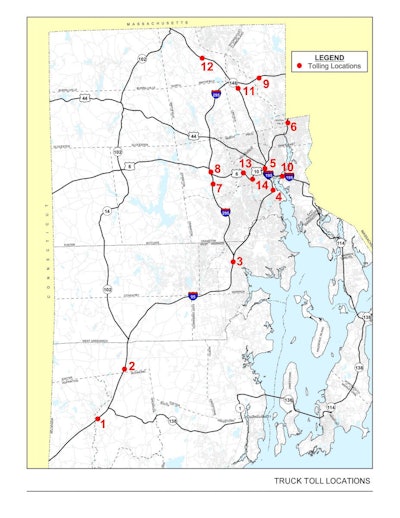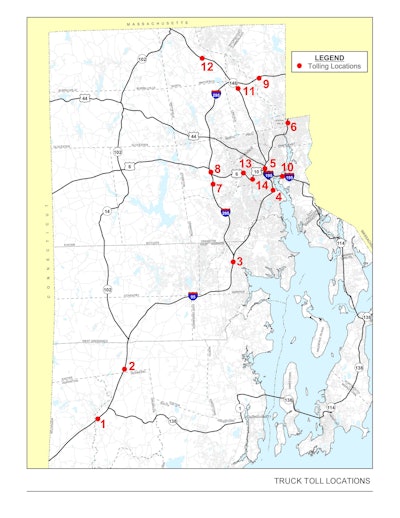
 A map of the truck tolling locations specified by the Rhodeworks plan.
A map of the truck tolling locations specified by the Rhodeworks plan.Rhode Island announced late last month that it will begin construction on the next 10 toll gantries that are part of its sweeping I-95 trucks-only tolling plan enacted in 2016. The first two toll booths opened in June, despite opposition from major trucking groups and a pending lawsuit from the American Trucking Associations.
The U.S. DOT has continued to green light the state’s Rhodeworks plan tolling plan, including, most recently, granting approval for construction of the next 10 gantries. The state’s DOT says the gantries will be built one at a time, with each one taking roughly one to two months to complete. The 10 gantries should be completed by May 2020, R.I. DOT says.
The booths are electronic and will collect between $3 and $3.50 when a truck passes underneath. Truckers traveling on I-95 will pay a total of $20 to travel one way through the state, with a maximum total charge of $40 per day.
A total of 14 tolling locations are planned, with the state estimating that the tolls will generate an additional $1 billion in revenue for the state over a 10-year period. The only vehicles subject to the tolls are Class 8 trucks and larger.
In addition to ATA, the Rhode Island Trucking Association has fought the tolls. RITA said in 2016 the state had been irresponsible in its maintenance of infrastructure and was using the trucking industry as “a scapegoat” to fix these issues.
The group in 2015 proposed an increase in diesel taxes and truck registration fees as an alternative to the tolling plan.









